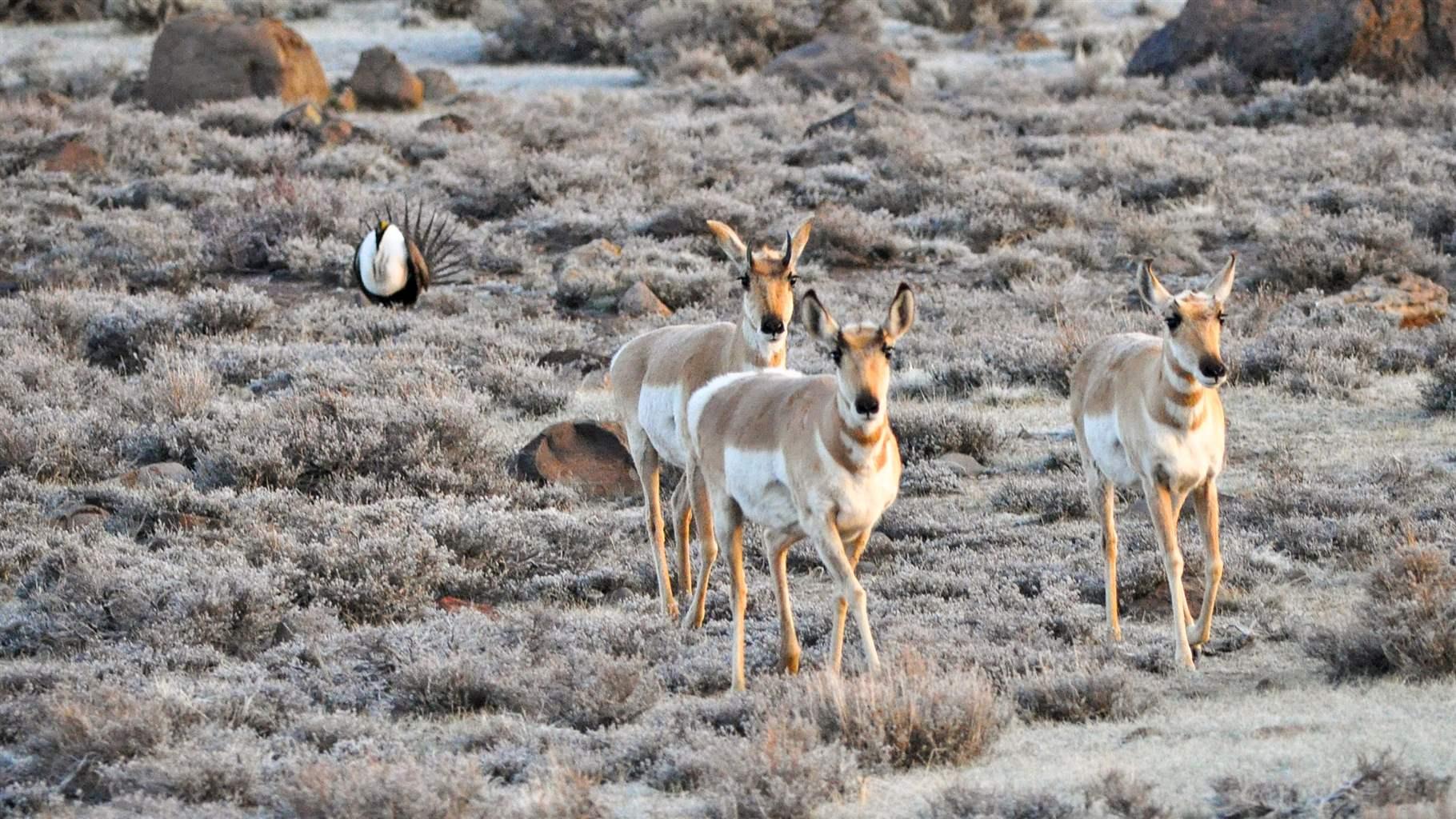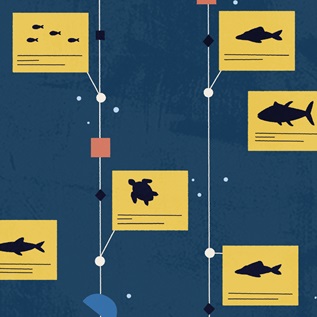Updated Greater Sage-Grouse Plans Reflect New Science
Update of 2015 plans show how the U.S. can better protect the bird as numbers decline

WASHINGTON—The Pew Charitable Trusts today commended the Bureau of Land Management (BLM) for issuing draft amendments to its 2015 greater sage-grouse plans. The amendments consider new science, including how climate change and other stressors affect the bird, in assessing how to best conserve greater sage-grouse habitat on public lands across 10 western states.
The sagebrush-steppe of the interior American West covers tens of millions of acres and is one of the nation’s most imperiled ecosystems. Home not only to greater sage-grouse but also to mule deer, pronghorn, pygmy rabbits, and more than 350 other species, sagebrush landscapes continue to shrink rapidly because of a host of growing threats—including wildfire, energy development, and the spread of invasive plant species.
In 2015, after a multiyear collaboration, the BLM and the U.S Forest Service amended their previous plans for managing the public lands that encompass sage-grouse habitat. According to polls conducted in counties inhabited by sage-grouse, communities in or adjacent to sage-grouse habitat largely supported the BLM’s 2015 sage-grouse conservation plans, which were widely hailed by sportspeople, biologists, and governors as a victory for the iconic bird and the other species that call the Western sagebrush home. The U.S. Fish and Wildlife Service relied on the results of the BLM and Forest Service collaboration, as well as on state-level plans, when it opted not to list the greater sage-grouse under the Endangered Species Act—a noteworthy move that showed the agency’s confidence in the bird’s recovery.
However, following the 2017 change in administration in Washington and subsequent legal challenges, the 2015 plans were never fully implemented. A March 2021 study by the U.S. Geological Survey—the most comprehensive analysis ever of sage-grouse population trends—found an 80% decline in the bird’s population throughout its range since 1965, with half of that drop occurring since 2002. Additionally, hundreds of studies since 2015 have addressed sage-grouse management. These findings—coupled with results from a BLM five-year monitoring report that found that conservation and restoration efforts need to be enhanced, expanded, and strengthened to address the factors leading to the greater sage-grouse’s decline—indicated the need for the recently released plan updates.
Marcia Argust, director of Pew’s U.S. conservation program, issued this statement:
“Pew applauds the Bureau of Land Management (BLM) for bringing the latest science, including planning for climate impacts, to this round of sage-grouse plan updates. With the health of the sagebrush ecosystem and the bird continuing to decline, it’s more important than ever to conserve this habitat to help the many species that depend on sagebrush—and the people in local communities who rely on sagebrush lands to support their livelihoods and traditions.
“These draft plans are a step in the right direction, but science is pointing to the need for even stronger management in order for the greater sage-grouse population to recover. Since 2015, significant new scientific information has been collected and several hundred peer-reviewed scientific publications regarding greater sage-grouse management have been published. BLM can be successful in the final plan by analyzing and incorporating this new, best available science, along with planning for a changing climate and strengthening management prescriptions for the greater sage-grouse and the health of this classic American landscape.”












